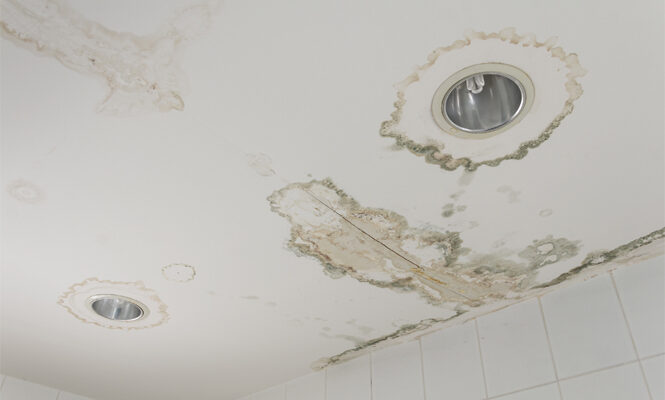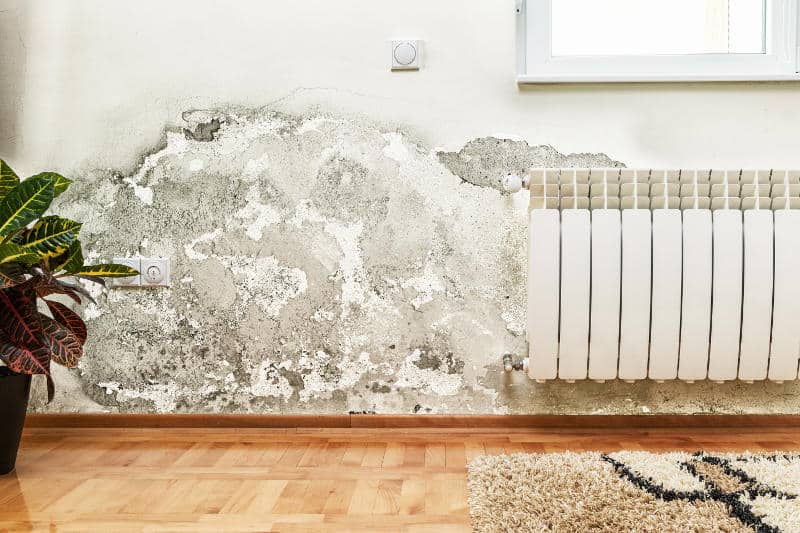Presented here in the next paragraph you might get more decent news in relation to How to Find and Repair Water Leaking in the Wall.

Water spots on walls are not pleasurable to the eyes. Sometimes it appears almost inescapable to experience water stains on wall surfaces in houses.
Homeowners living in damp areas constantly deal with the worry of water discolorations on walls. With well-shaped and also accurate info on the reasons of water stains as well as punctual repair processes, you will constantly be an action ahead of such incidents.
3 Typical Causes of Water Stains on Wall Surfaces
Unlike popular belief, water stains on walls do not always originate from inadequate building materials. There are a number of causes of water spots on wall surfaces. These include:
Poor Water drainage
This will stop water from leaking right into the wall surfaces. This web links to too much moisture that you see on the wall surfaces of your structure.
So, the leading source of damp walls, in this situation, can be a poor water drainage system. It can additionally be due to inadequate management of sewer pipes that go through the building.
Wet
When hot wet air meets with completely dry cold air, it creates water droplets to base on the walls of buildings. When there is steam from cooking or showers, this takes place in kitchens and shower rooms. The water beads can tarnish the surrounding walls in these parts of your home as well as infect various other areas.
Wet or condensation impacts the roof and also walls of buildings. This triggers them to appear darker than various other areas of the home. When the wall surface is wet, it creates an appropriate environment for the development of microorganisms and also fungis. These might have unfavorable effects on health, such as allergies and breathing problems.
Pipe Leaks
Most houses have a network of water pipelines within the walls. It always boosts the stability of such pipes, as there is little oxygen within the wall surfaces.
Yet, a downside to this is that water leakage influences the wall surfaces of the building and also causes extensive damages. An indication of malfunctioning pipelines is the look of a water stain on the wall.
Water Spots on Wall Surface: Repair Tips
Homeowners would typically desire a quick fix when managing water spots. They would soon recognize this is detrimental as the water spots repeat. Below are a couple of handy ideas that will direct you in the repair of water stains on wall surfaces:
Pro Pointer
A houseplant in your house likewise increases its moisture. If the house is currently humid, you might want to present houseplants with minimal transpiration. An instance of appropriate houseplants is succulents.
Verdict
No one desires to have water spots on walls in their residence, it can occur to the best of us. This article offers you take advantage of, as you now recognize exactly how to handle this mishap if it does take place.
It is always best to recruit professional solutions to assist repair the damages in your house.
In some cases it seems nearly inescapable to experience water discolorations on wall surfaces in homes.
In contrast to prominent belief, water discolorations on walls do not always stem from poor structure products. There are numerous reasons of water spots on walls. The water beads can stain the bordering walls in these parts of your house and spread to various other areas.
Below are a few helpful ideas that will assist you in the repair work of water discolorations on walls:
What To Do About A Water Stain On The Ceiling
Why This is Important
Not only are water stains a cosmetic issue, but they can also indicate that there is a leak in the home that needs to be fixed. Sometimes, this may be the first indicator of a bigger problem brewing or may have been a one time leaky issue. It is important to investigate to make sure it is under control before you possibly have thousands of dollars in repairs.
Identify the Cause of the Water Stain on the Ceiling and Where to Start
It is important to identify the cause of the water stain on the ceiling first so you can fix it. Start first with the roof to see if there are leaky shingles or missing shingles, missing flashing, or weakened seals around roof vents. You may need to get on top of the roof to look or call a professional to check for you. It is possible that water is coming into the home from the roof. So you will want to have the professional take a look to see if this is the issue.
Also, look in the attic to see if there is a pool of water and that will also help you to know if there is water leaking into the home.
Radiator or Air Handler on 2nd floor
In colder parts of the country, there may be a radiator on the second floor. Radiators are used to keep rooms warm in the cold months and do wear out or need replacing. Does the radiator have a pool of water underneath it or any dripping? If yes, this could be the problem and causing the water stain on the ceiling. Check the model of the radiator and see if it is something you can do yourself or call a professional to check the body, pipe, and the valve for leaks.
The same is true for those who have an air handler on the second floor. Did your AC stop working? Or do you see water leaking? The drip pan (if you have one) on an HVAC unit collects the water and it can become clogged and back up. The float switch (again, if you have one) will activate as soon as the water reaches a certain level and shut down the HVAC unit, thus not allowing the water to continue to flow. Make sure the HVAC doesn’t become clogged and checking this monthly is a good idea.
Upstairs Bathroom Can Cause a Water Stain on the Ceiling
Bathrooms are often the culprit as caulking wears out after about 10 years and needs replacing. Is the home older than 10 years? This may be the issue. While checking the caulking in the bathroom around the sinks, toilets, and shower/bath, also check for black mold in the shower. Might as well rule everything out while you are looking for the source.
Other areas to look at are toilets clogging and overflowing. Do you see water near the toilet on the floor? This could be the seal is broken on the toilet and it needs replacing. Also, adding caulk to the toilet to connect it to the floor is a good idea. If the toilet is continuously running, you can shut off the water and do the water meter test.
Write down the number on the water meter and then turn off the water for three hours. When you turn it back on, check the number on the water meter. If it has increased, then you have a leak in the indoor plumbing.
Taking care of these areas is essential as sewer gases can also be escaping. Sometimes these issues will soak the ceiling below and clog in sinks and drains in the shower can also cause flooding in a bathroom.
Put a Drop Cloth on the Floor
With goggles on and gloves, put a drop cloth on the floor. Then, take 3 glasses of warm water and one cup of bleach and mix it together. Set up a ladder and climb up to the stain. Use a sponge that is soaked in the concoction to rub it on the water stain to get it to come off. Take a spray bottle of plain water and spray the stain to get the bleach mixture off. This is important because you want to be able to prime it and paint it. Take a dry towel and rub the stain to help it dry faster. Next, put painters tape around the ceiling if the spot is near the walls. Apply an Oil Based, Stain Blocking Primer
Apply an oil based, stain blocking primer that is mold resistant that matches the ceiling. It is important to put the primer on first so the paint doesn’t soak into the ceiling. If you have a flat ceiling, you can use a paint roller with an extension to apply it. Once the primer has dried, apply the paint. If you have a textured ceiling, a spray on primer might work better.
Choose a Latex or Alkyd Ceiling Paint
The latex ceiling paint is water-based and dries faster than the oil-based paints and also is thicker than wall paint. Make sure that the paint matches the ceiling color. Using a roller, paint it on over the primer and let it dry for up to four hours. Then, apply a second coat and let it dry. The second coat should make the stain disappear.
https://insideandoutpropertyinspectors.com/water-stain-on-ceiling/

We had been made aware of that editorial about How to Find and Repair Water Leaking in the Wall from a good friend on a different web blog. Loved our piece of writing? Please share it. Help others locate it. Thanks a bunch for your time. Kindly come by our site back soon.
Give Me A Quote!